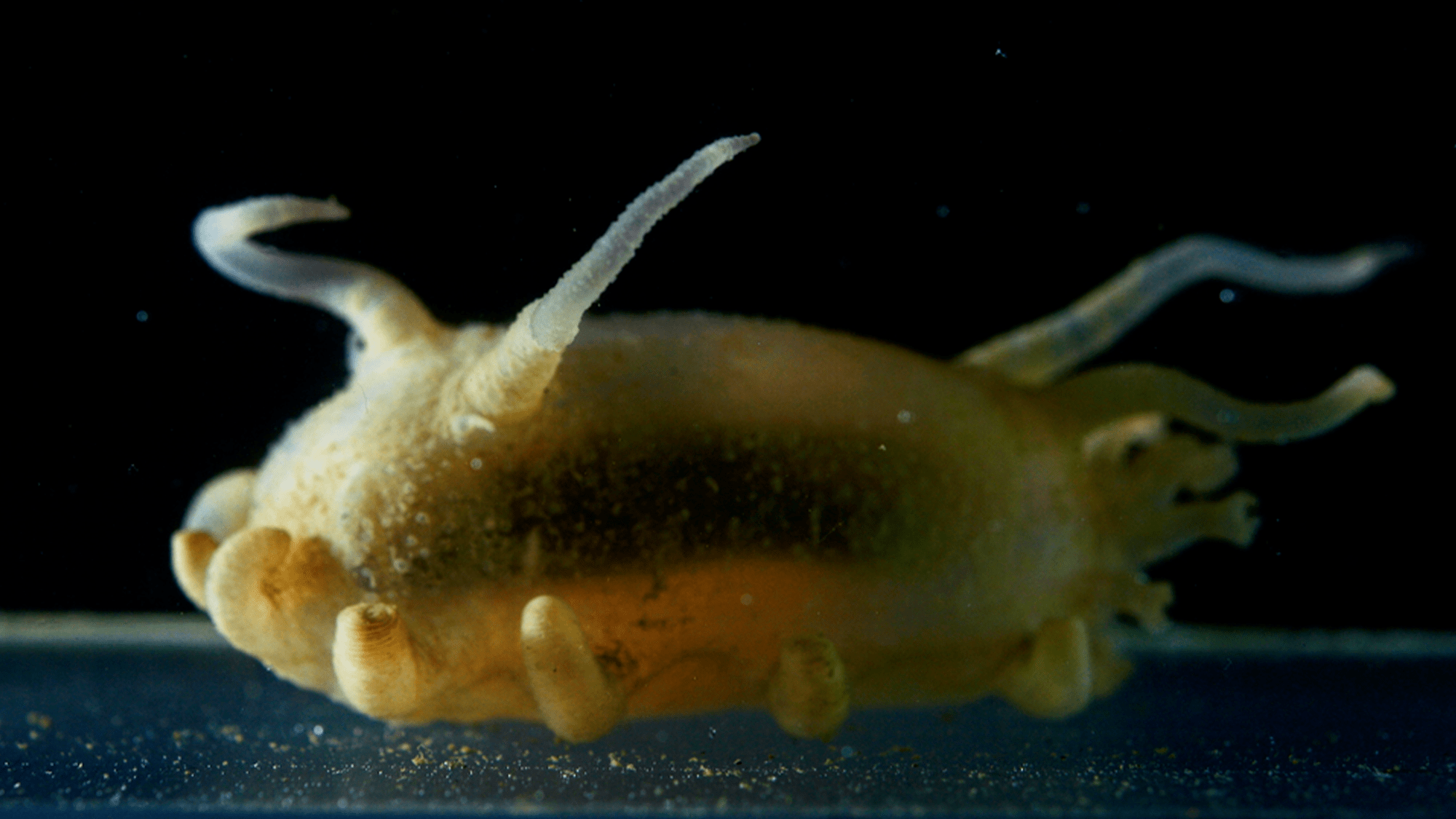

Like jellyfish, fungi, sea worms, and fireflies, some species of sea cucumbers glow in the dark. A team of researchers from Nagoya University in Japan have found that 10 known deep-sea species are bioluminescent in their natural habitats. The findings are part of a new textbook called The World of Sea Cucumber published on November 10.
[Related: The deepest known ocean virus lives under 29,000 feet of water.]
There are roughly 1,200 species of sea cucumbers. These marine invertebrates are found in every ocean on Earth, but they are best represented in the western Pacific and Indian Ocean. They generally live in shallow waters, but some species live at depths of thousands of feet deep. Most closely related to sea urchins, sea stars (aka starfish), sea lilies, and sand dollars, these bottom-dwellers range from as small as one inch long up to six feet. Some sea cucumbers are also known to shoot out a tangle of sticky, noodle-like goo from their butts when provoked.
The new textbook takes readers deep underwater and discusses the bioluminescent properties of some of these sea cucumbers. According to NOAA, the light emitted by bioluminescent animals is produced by energy released from interior chemical reactions that are sometimes ejected from the organism. Its function is still a mystery, but it is generally used to ward off or evade predators, find food, or as a form of communication.
The authors drew on previous sea cucumber research to highlight the differences between the shallow-dwelling and a bit more drab species and their brilliantly glowing deep-sea relatives. The book also shows the evolution of sea cucumbers from the Jurassic era roughly 180 million years ago up to the present day.
To uncover the 10 bioluminescent sea cucumber species, the team deployed a remotely operated vehicle about 3,280 feet below the surface of Monterey Bay, California. The vehicle was equipped with a very sensitive and an arm that was robotically controlled from the ship. Unlike the more uniform bioluminescence seen in specimens taken onto ships, the light was shining from the sea cucumber’s head to tail and then back up similar to a wave.
According to the authors, the previously unknown luminosity in these 10 deep-sea species suggests that sea cucumbers are more diverse than scientists once believed. A member of the order Molpadia is included in this discovery, which was previously believed to be a non-luminescent order of animals.
While these sea cucumbers dwell in some of Earth’s deepest parts, they are still not immune to the effects of overfishing and particularly the drilling and mining activities that threaten their ecosystem.
[Related: This headless chicken is the deep-sea ‘monster’ of our dreams.]
“As deep-sea exploration and development continue, information on their biodiversity and ecology, such as this book, becomes important as it allows us to assess the impact of human activities on deep-sea ecosystems,” textbook co-author and Nagoya University biochemist Manabu Bessho-Uehara said in a statement. “Heavy metal pollution from the mud discarded during drilling operations and motor-derived noise disrupting sound communication are important problems, but the effects on organisms when bioluminescence signals are disturbed, such as when light is obscured by drilling mud, have not been examined. It is necessary to clarify the importance of bioluminescence on the deep-sea floor and find measures that will lead to sustainable development.”
Studying the flora and fauna living in these extreme locations can also provide valuable knowledge of all life on Earth. It can help us discover new viruses that thrive in hydrothermal vents and the factors at play in Earth’s climate and carbon cycle.
“I believe that understanding deep-sea ecosystems and interactions among organisms will lead to a better understanding of life on Earth itself,” said Bessho-Uehara.
